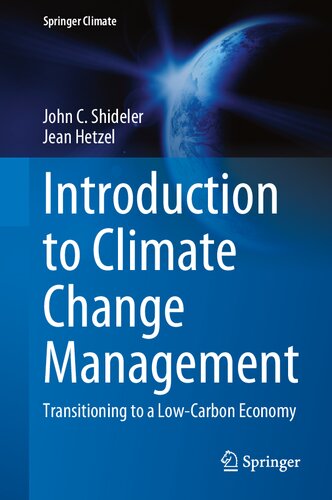

Most ebook files are in PDF format, so you can easily read them using various software such as Foxit Reader or directly on the Google Chrome browser.
Some ebook files are released by publishers in other formats such as .awz, .mobi, .epub, .fb2, etc. You may need to install specific software to read these formats on mobile/PC, such as Calibre.
Please read the tutorial at this link: https://ebookbell.com/faq
We offer FREE conversion to the popular formats you request; however, this may take some time. Therefore, right after payment, please email us, and we will try to provide the service as quickly as possible.
For some exceptional file formats or broken links (if any), please refrain from opening any disputes. Instead, email us first, and we will try to assist within a maximum of 6 hours.
EbookBell Team

4.4
92 reviewsThis book provides climate students with the basic scientific background to climate change management. Students will learn about international and national approaches to climate change management defined in voluntary initiatives as well as in national law and international agreements. The book describes mitigation and adaptation measures, monitoring and reporting of greenhouse gas emissions, and strategies for achieving a low-carbon economy, including green finance.
This book combines theory and practice, introducing students to the conceptual background but also taking a professional and technical approach with case studies and low carbon toolkits. Filled with didactic elements such as concept schemes, tables, charts, figures, examples, as well as questions and answers at the end of the chapters, this book aims to engage critical thinking and the discussion of important topics of our days.
The low-carbon strategy is one of the answers to limiting the greenhouse effect on our planet. This strategy is to minimize the overall carbon consumption in the life cycle of the products we consume, from the extraction of raw materials to the end of their life. The future is being built today. This book will guide its readers along the path of imagining and realizing a low-carbon economy.”